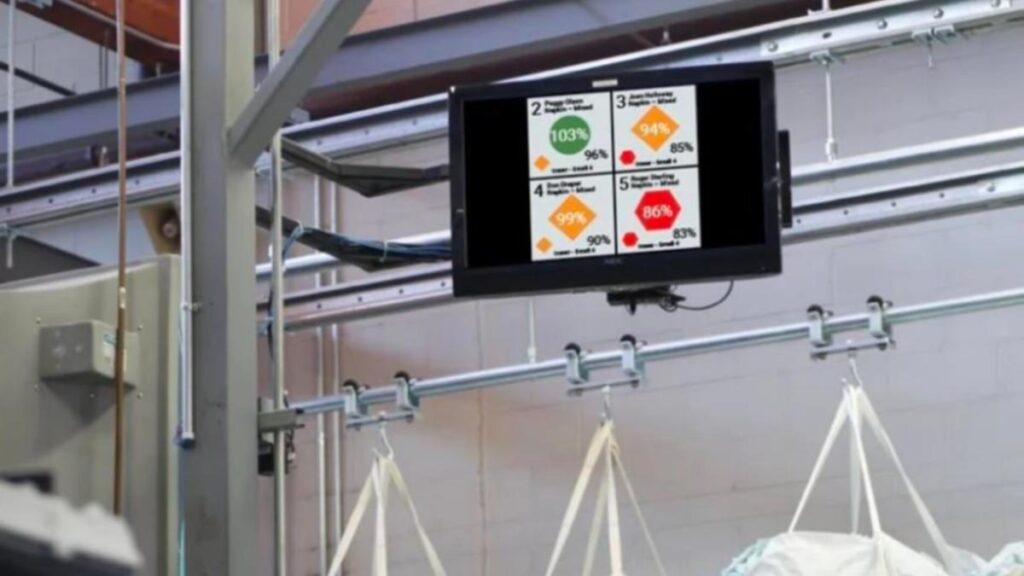Industrial laundry workers are constantly face-to-face with real-time productivity scoreboards, as the Laundry Association of Australia says the surveillance has boosted productivity 5 to 10 per cent.
The association presented to a Victorian parliamentary committee hearing last week, decrying the biased nature of the inquiry into workplace surveillance and saying the business perspective of boosting productivity was being discounted.
“Under the inquiry’s terms of reference, our productivity tools are deemed workplace surveillance, and in all 13 of the examination areas mentioned, the connotations are disturbingly negative,” Laundry Association of Australia chief executive Luke Simpkins writes in the submission.
“This one-sided approach is particularly stark because there is no mention at all in those terms of the relevance and importance of workplace productivity.

“If this had been an inquiry by an industrial relations committee, these sort of one-sided terms of reference would be expected, however given the name of the committee is the Economy and Infrastructure Committee, the lack of interest in business and productivity is a salient point.”
NewsWire did not attend the hearing, which was held on September 23, and the recording or transcript is not yet available.
In the laundry association submission, it says most industrial laundries in Victoria use a real-time, clearly visible scoreboard showing how fast each staff member is working.
“Almost all significantly sized laundries will have what is effectively an item counter for each team member,” Mr Simpkins writes.
“A visual display is available for each team member to observe. That compares their actual speed of feeding (items into machines) against set targets. This has resulted in productivity improvements of between five-10 per cent.
“‘Workplace surveillance’ is about productivity not about other motives, contrary to what the terms of reference imply.”
Mr Simpkins served nine years as a federal MP for the Liberal Party until 2017, representing the West Australian electorate of Cowan.
He argues wage increases and rising gas bills have cut profitability in an already low-margin business.
But the sector is cutting jobs via automation.
“Our sector therefore seeks to reduce our costs, with the pursuit of improved productivity measures, including the software mentioned in this submission but also through the constant embracing of automation and robotics, thereby increasing productivity whilst also reducing the workforce needed,” Mr Simpkins said.
The independent Australia Institute Centre for Future Work also presented at last week’s hearing.
“Surveillance can benefit workers,” director Fiona Macdonald said.
“However, there is good evidence that the growing use of surveillance is extending and intensifying longstanding efficiency-driven logics that in many workplaces, and for many workers, result in work intensification and reduced autonomy and control and undermine job quality and worker wellbeing.”
https://thewest.com.au/business/laundry-workers-face-constant-productivity-counters-association-bemoans-one-sided-worker-surveillance-inquiry-c-16240635


